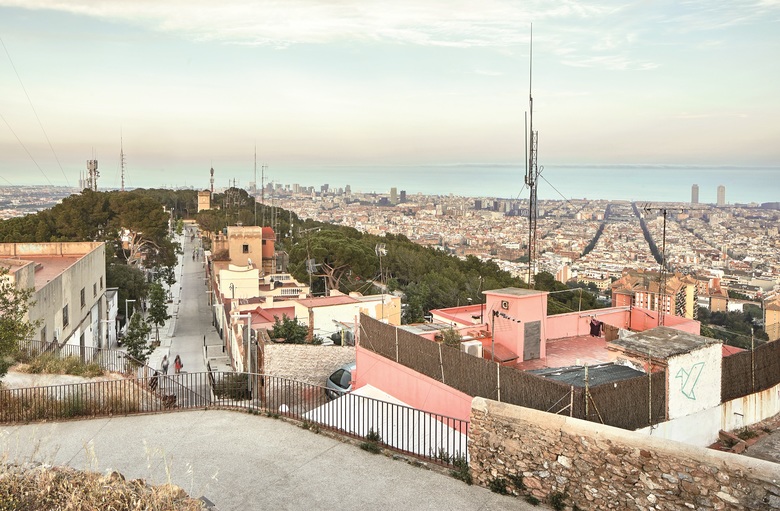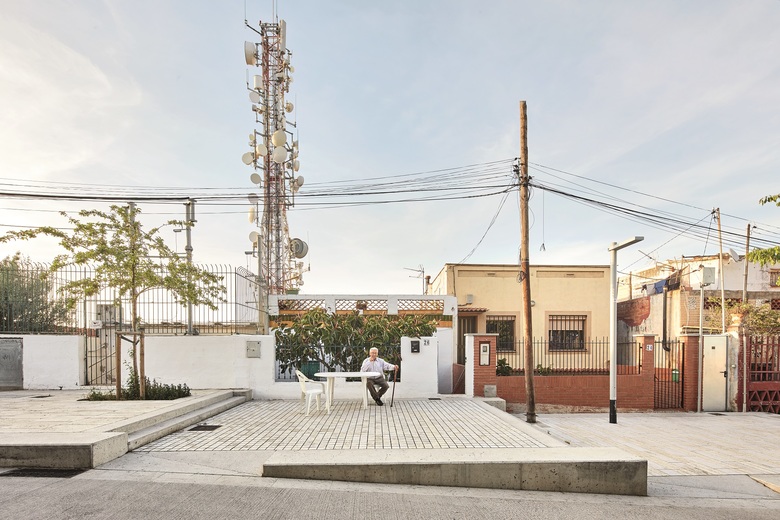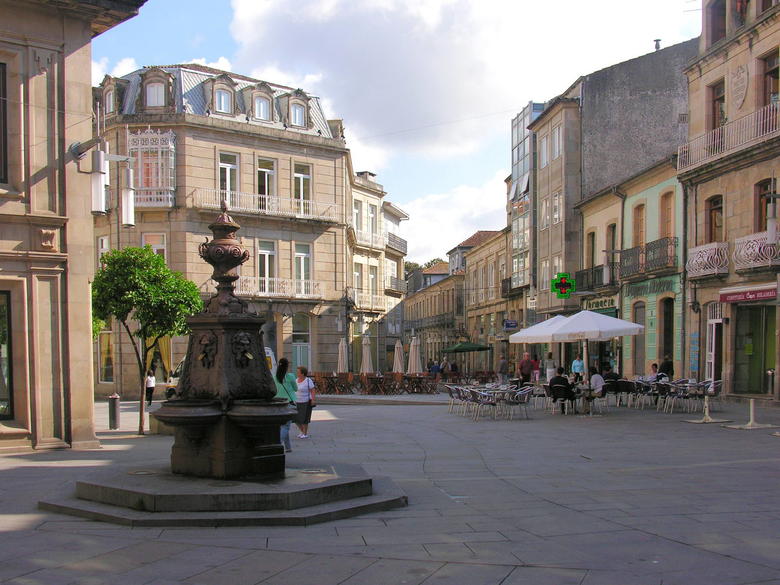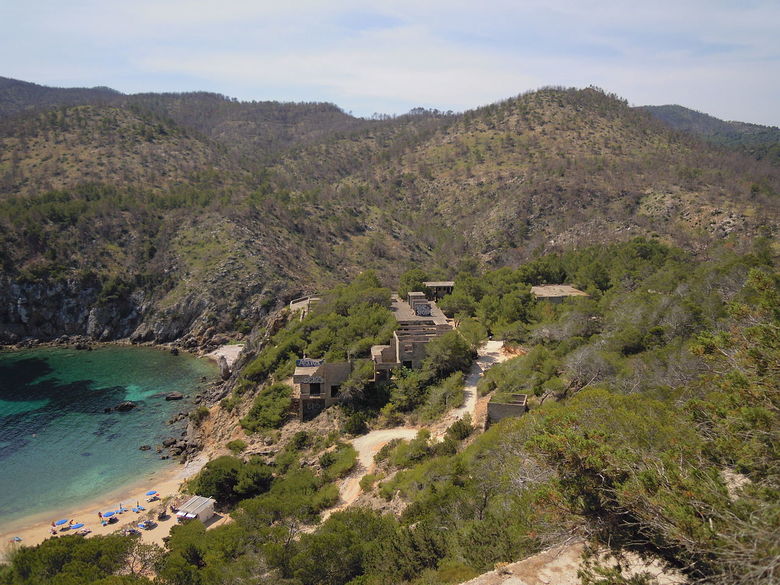Baukultur: In Spain Davos Means a Commitment to Better Building
Two years ago this month, the Davos Declaration 2018 called for a policy of "high-quality Baukultur" across Europe. Spain signed the Declaration in spring 2019, turning what many of the country's architects have practiced for decades into official public policy. Madeline Carey examines the impact of Baukultur in Spain and highlights a few positive examples.
Upon arrivalUpon arrival many visitors are shocked to see so much garbage on Mediterranean beaches, surprised to ride on trains that run so close to the Spanish coastline. First-time visitors are taken aback by the desertification visible from any commercial jet flying over the center of the country, a stark reminder of drought that developers failed to recognize when they built golf courses in driest Murcia. Nowadays many architects as well as policy-makers express remorse and dismay at these remnants of Francoist planning and the construction boom of the early 2000s. In fact, Spanish architects are leading an important multi-sector effort to build more sustainably and to design healthier, more livable towns and cities.
Across the country, Spanish architects are working effectively with politicians at the municipal, regional, and national level in order to create better policy in regards to sustainable growth and building. In a nation known for an archaic, rigidly centralized government, a truly decentralized effort is working to help build — and plan — better. Today’s most prominent Spanish architects are staunchly pro-European Union and they’re convinced that international institutions are a vital tool for collective progress. Thus, it’s no surprise that last March when the Spanish government signed the Davos Declaration, Spanish architects were strong supporters and their representative body, the Consejo Superior de los Colegios de Arquitectos de España (CSCAE, or Council for Spanish Architects), embraced Davos and its firm commitment to the concept of Baukultur as a core policy objective.
Baukultur is a German term without an exact English equivalent. It describes the “culture of building.” The concept includes any, and every, human activity that changes the built environment, including every built and designed asset that is embedded in and relates to the natural environment. Baukultur, as a political commitment, calls for new construction and existing infrastructure and public space — including, but not limited to, monuments and cultural heritage — to be understood as a single entity. Thus, Baukultur refers to both detailed construction methods and large-scale transformations and developments, embracing traditional and local building skills as well as innovative techniques. The term is part of a new way of thinking about planning in a way that takes into account both the past and the present, social justice, equality, and a more sustainable understanding of progress, connection and expansion. Baukultur addresses and attempts to respond to challenges as ubiquitous as they are diverse: from gender (in)equality in the engineering and architectural sector to quality of life for aging populations and finding ways that the built environment can better guarantee human rights and dignity to migrant populations.
Over the past two years, the Council of Spanish Architects has paid special attention to the concept of Baukultur, helping to create a social movement in Spain. Throughout the entire country, in large cities and remote rural areas, various associations of architects have contributed to explaining this method of building and planning to citizens. Real dialogue and civic engagement have taken place and that makes for better, more sustainable projects. A critical mass has begun to think about future development in line with the guidelines and good practices marked by Davos. But architects are not preaching or proselytizing; on the contrary, they are listening to residents and other professionals in order to change their “culture of building.” Over a hundred entities — political, cultural, and professional associations — have signed on to this joint effort. At the national level, the Ministry of Culture and the Ministry of Development have signed agreements with the Council of Architects and are prioritizing projects that reflect the spirit of the Davos Declaration and the Baukultur vision.
Despite a legacy of dubious expansion projects from the mid-twentieth century (during Franco’s rule) and the delirious construction boom of the early aughts (under both right and left-wing governments), Spain also has a long tradition of a more sustainable building culture rooted in truly singular landscapes and in constant conversation with the country’s inhabitants. For a country that modernized its infrastructure incredibly quickly — thanks in great part to an injection of subsidies European Union in the 1990s — Spanish planners have managed to design public spaces and housing on a human scale, while taking into account European standards but remaining loyal to domestic traditions and style. Examples of this native Baukultur exist throughout the country, from the savage Atlantic coast of Galicia to the sun-bleached Mediterranean island of Ibiza.
A wonderful example of this holistic way of working is Bosch CapdeFerro’s Calle Plaza (or Square Street, pictured above), the renovation of a hilltop street in Barcelona. The project modifies slightly the topography in order to provide road access via a ramp. Terraced squares along the street preserve and emphasize the residential sense of the neighborhood. Now neighbors can walk about more easily and enjoy an outdoor space that is both breathable and accessible, just above the congested city center. This recent project, commissioned and promoted by the Barcelona City Council, is an excellent example of public space at a remove from the bustling touristy areas, redesigned and improved with the local residents in mind.
On the other side of the country, in Galicia, the city of Pontevedra is a global reference in smart, people-friendly planning. Since 1999, cars have been banned in the city center. Pedestrians and bikers instead of drivers mean cleaner air and quieter streets, as well as a revitalized, more dynamic city center. Lower CO2 emissions and fewer car accidents make for a more enjoyable city. This model is financed at the municipal level and has been lauded by the UN and many international experts.
A delightful sense of Baukultur is flourishing in Andalusia as well. Victor López’s renovation of a former military hospital into the Escuela Técnica Superior de Arquitectura is an extraordinary achievement, respecting all the previous eras of the structure. Originally a Nasrid house that over centuries and many renovations and additions came to occupy an entire city block, López created an entirely new space: a luminous, functional building that is modern yet speaks of, and with, the past lives of the city and the structure.
Although the Council of Spanish of Architects is working hard to prioritize such projects as those above, sustainability and preservation are not at all new. They are essential to understanding much of mid-century architecture in Spain and the Mediterranean esthetic, what is perhaps best exemplified by the late, great Josep Lluis Sert.
On the island of Ibiza, in the 1930s, long before the days of techno dance parties and hippie tourists, Sert first encountered a beautiful, uncontaminated architecture. He recognized that local constructions — country houses and tiny churches — worked with the landscape, humanizing it, respecting the seasons and the daily rhythms of the island. He used much of what he saw there in projects throughout Catalonia. When he returned to Ibiza in the 1960s, he was saddened to see that many of the traditional houses were gone. Tourism had already begun to ravage the island. Sert feared that traditional wisdom, austerity, and gentle grace were being lost.
In Ibiza and all along Spain’s coast, tourism and unbridled growth have done much damage. Sert, perhaps Spain’s most international architect, knew that innovation had to respect both traditional building methods and the natural environment. It’s a lesson architects and urban planners must insist upon again and again. In Spain, the Council of Architects is working hard to ensure that their building culture can’t be about building more, but rather about building better — at the local, national, and global level. Here’s to hoping that by 2030, a century after Sert’s visit to Ibiza, visitors to Spain encounter a built environment that is as sustainable and as beautiful as the surrounding landscapes.




